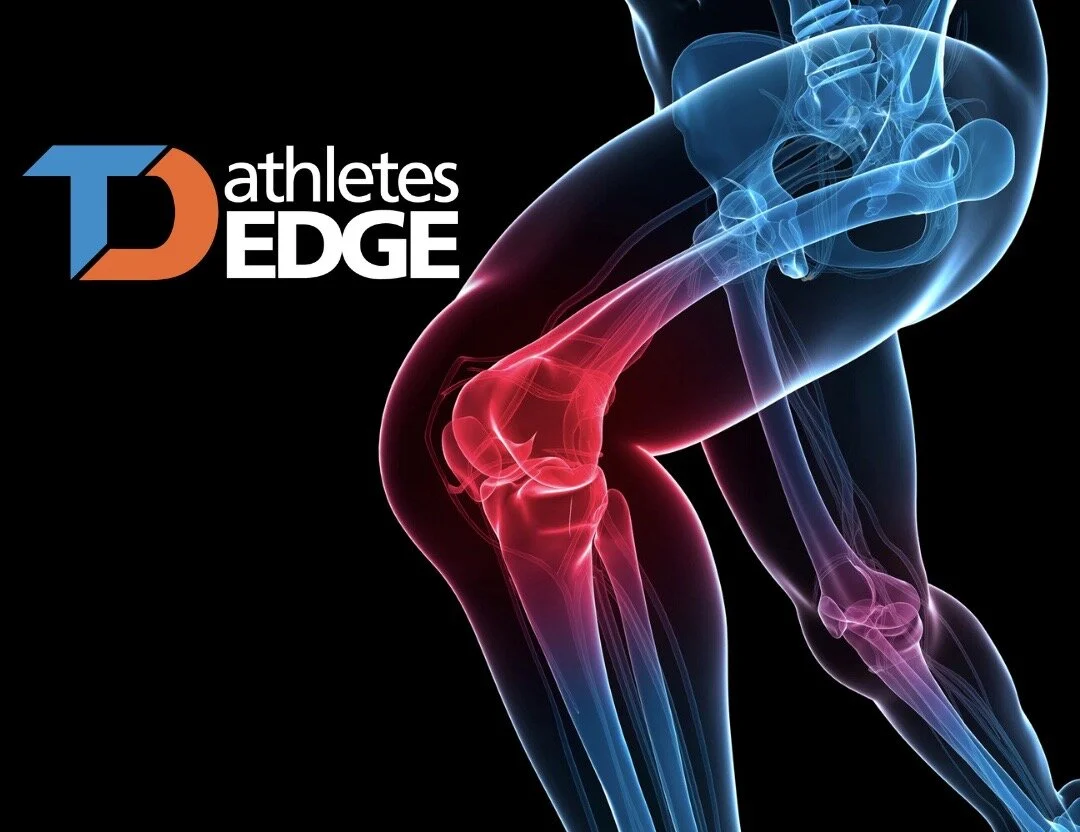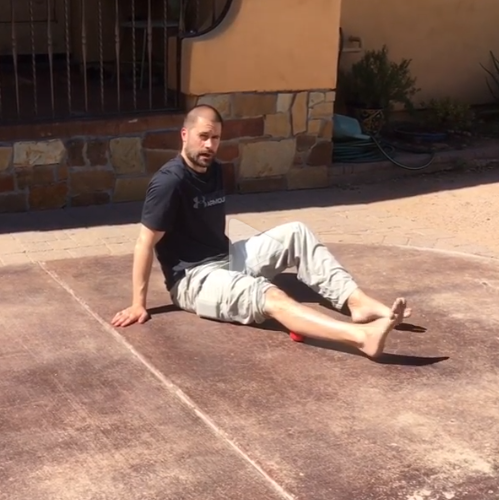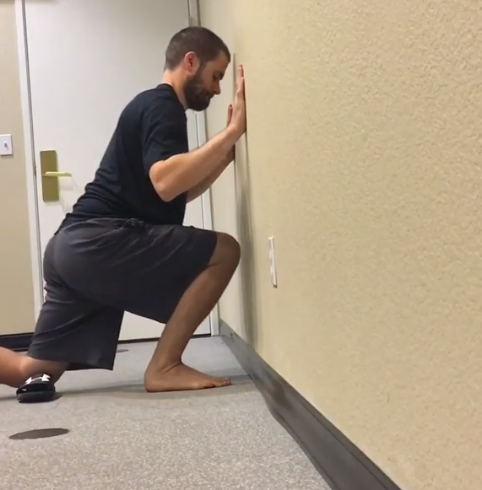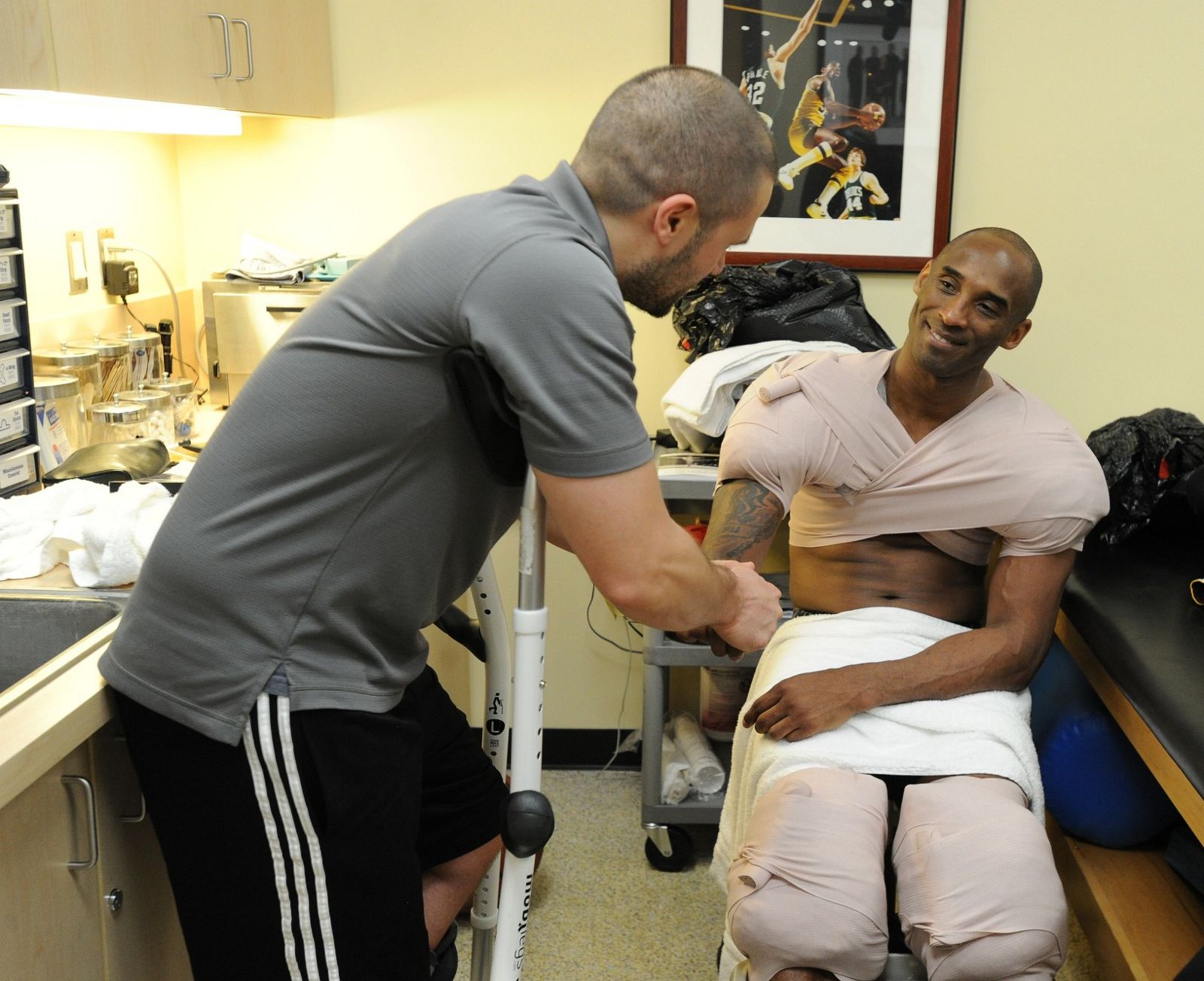Lower extremity injuries have an incredibly high prevalence in sports. Unfortunately, the occurrence of these injuries has already become intertwined with athletic culture…
Viewing entries in
Recovery
I have a question for you: Would you run 5 miles as hard as you can on rough terrain after having been on a hiatus from running for 8-10 months? Probably not. Next question: If you did do that, would you expect your body to feel great during and in the days after? Probably not.
Today's Edge: Take care of your calves to take care of your feet. Here's a video on how to use a self massage tool, like a lacrosse ball, to keep your calves happy and your plantar fasciitis under control.
Sleep is hard on the road. Each hotel room is a different environment from your normal sleep environment. This makes it tough to stick to the routine as you prep for a good night's sleep on the road. Throw in a few time zone changes and you can consider your sleep ruined. Here are 7 tricks that I use when I enter a hotel room to set myself up for sleep success:
1. Unplug Unnecessary Electronics:
The first thing I do when I enter a hotel room is unplug the alarm clock. The light from these digital clocks seem innocent but it's more than enough light pollution to interrupt your sleep without you knowing it. Additionally, there is a good chance that the alarm hasn't been shut off from the previous guest. This can potentially set you up for a rude awakening at a time that you don't want to be waking. Another thing to consider is unplugging the television. I try to avoid turning the TV on when I stay in a hotel room. This is a slippery slope because it's all too easy to fall asleep as you're watching Sports Center for the fourth time. This is a recipe for an interrupted and low quality sleep.
2. Travel With Black Tape:
You would be surprised at how a hotel room can be lit up from sneaky sources of light pollution. Two of the biggest offenders in this category are the peephole on the door and the green or red dot light on the fire alarm. Traveling with a roll of black theater or electrical tape is a great solution to this light pollution problem. Place a small square of this black tape over the peephole on the door and on the dot light of the fire alarm for a more sleep-friendly hotel room.
3. Block The Light From The Hallway With A Towel:
Next time you check into your hotel room, shut all of the lights off, close the curtains and look at how much light streams in from the hallway under the door. The solution to this is simple: Place a towel across the bottom of the doorway.
4. Use The Privacy Sign:
The privacy sign is there for a reason - take advantage. The last thing you need is a hotel staffer knocking on your door while you're in a restful sleep. Throw that privacy sign on the door upon arrival to make sure there's no confusion.
5. Shut The Shades:
This may seem obvious but sometimes if it's dark outside it's easy to forget to pull the blackout shades shut. This is an important one to cover all of your bases.
6. Turn Down The Thermostat:
Most hotels tend to be set at 70 degrees fahrenheit when you walk in. Drop that down to somewhere between 66-68 degrees fahrenheit for a better sleep temperature. A cool room is a better environment for the body while sleeping. Everyone is different so find your sweet spot under 70 degrees. If the thermostat has a fan option, place that on low or medium. This should help avoid the "auto" fan setting which can be disruptive as it turns on and off throughout the night.
7. Sleep On The Floor:
I know this sounds crazy but all hotels have different mattresses with varying levels of firmness. A mattress that is more on the firm side tends to be best for most people to stay away from compromised sleeping postures. Additionally, your body gets used to a certain sleep surface so when a new surface is introduced it can make it hard to stick to normal sleep patterns. One solution for this mattress dilemma is to call guest services and order two extra comforters/blankets. Fold the two over in the size of a twin bed and place them on the floor. Use this to sleep on and then use the comforter from the bed to cover up with. I'll bet you'll be surprised at how comfortable this can be.
Like what you read?
Sign up now to get the latest tips and advice
Tim DiFrancesco, PT, DPT, ATC, CSCS, spent 6 seasons as Head Strength & Conditioning coach of the Lakers and is renowned nationally for his evidence-based and scientific approach to training, nutrition and recovery for athletes and fitness enthusiasts.
For training and nutrition advice, follow us on:
• Twitter http://twitter.com/tdathletesedge
• Facebook http://www.facebook.com/tdathletesedge
• Instagram http://instagram.com/tdathletesedge
• YouTube https://www.youtube.com/user/tdifranc1
• Sign up for our newsletter and follow our blog at http://www.tdathletesedge.com
The lack of a quality shoulder and arm care program can wreak havoc on your strides in the weight room, on the performance field/court, and in your overall health. However, if long-term resilience and robust shoulder health is your goal, you'll want to check out this 6-part warm-up routine.
Whether you're an athlete, sport coach, strength & conditioning coach, rehab pro, or weekend warrior you can't afford to keep chalking up injuries to bad luck.
Ever feel like your energy or performance levels are down for no good reason? You eat fairly well and workout like a champ but somehow you still find yourself feeling like your energy gauge is on low way too often.
The function of the lower limb tendons is to transmit very large forces exerted by the ground and the attaching muscle or muscle groups to the skeleton. This is an integral component for human locomotion and athletes ability to sprint, change direction and jump.
Approach your workouts with a "live to train another day" attitude instead of a "train until you puke" attitude. Anyone can train past exhaustion once but training for the long haul is an art/skill. Always fall back to the idea that today's workout will either enhance or undermine your bigger performance picture.
As the head strength & conditioning coach for the LA Lakers, part of my job is to make sure players stretch and warm-up correctly before they lift or play. This can be a challenge given that when players aren't playing in games/practices there's a great chance that they are sitting on a bus or airplane. Whether you're sitting all day at work or you're a high level athlete, sitting can cause your hip flexors and hamstrings to get tight and cranky.
Getting enough protein can be tough but one way to make sure you hit your ideal protein mark each day is to get some for dessert. This protein-packed creamy cherry chocolate treat has your protein needs and sweet treat cravings covered in a healthy way!
Your one-stop shop for the latest and greatest content that will help you to DISCOVER YOUR EDGE!
If you are involved in competitive athletics at any age or level then you know that unnecessary non-contact injuries are a significant and persistent issue. How is this possible when more science and technology is swirling around sports equipment and human performance than ever before?
Mark Madsen has been to the Final Four, won two NBA Championships, is a colleague and someone whom I hold ultimate respect for as a coach and a friend. I asked him about the challenges he faced during the 1998 NCAA tournament when he helped Stanford advance to the Final Four. Mark gives us a backstage snapshot of what the players are up against in March.
















